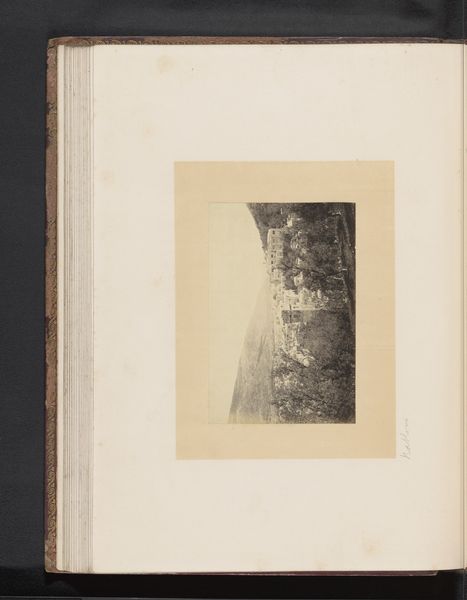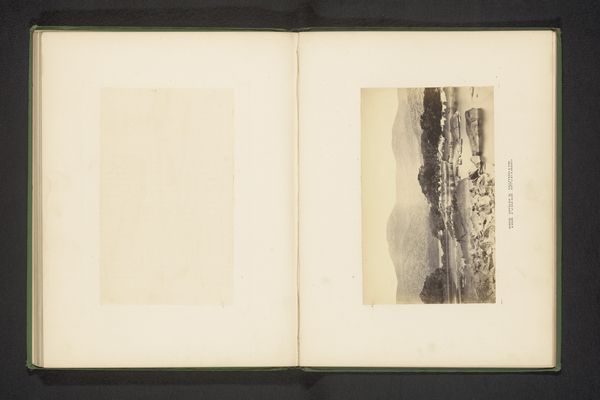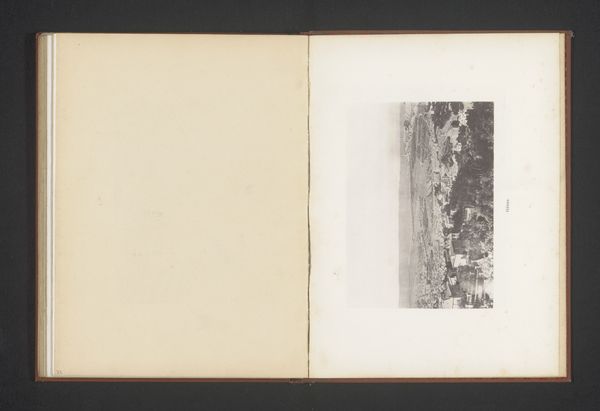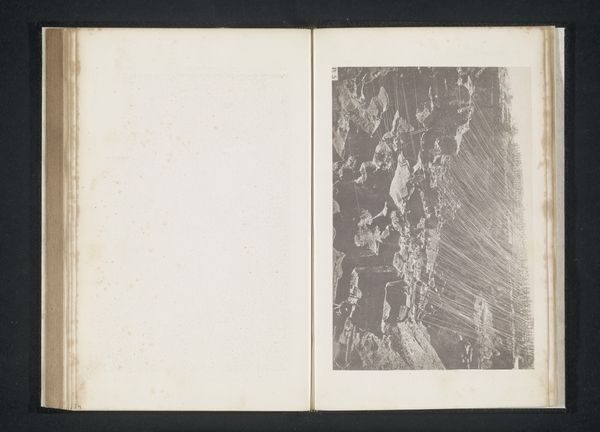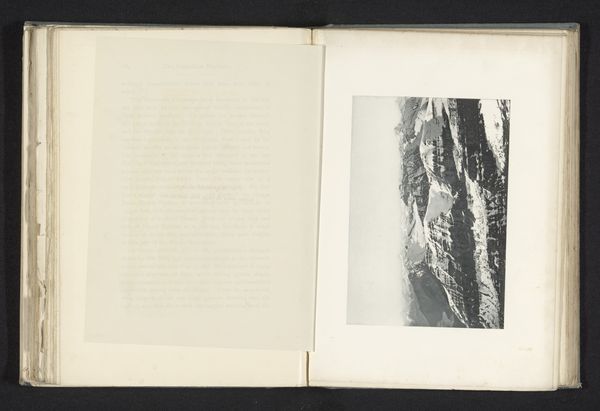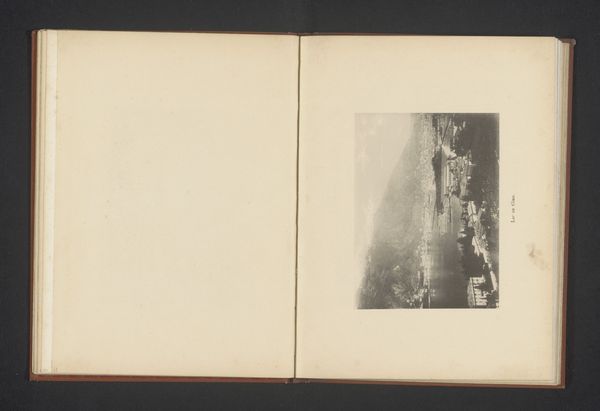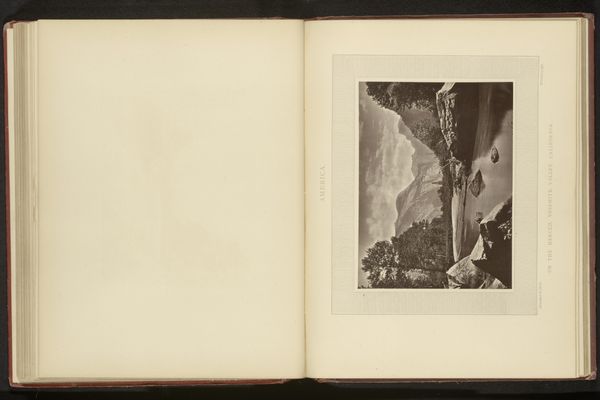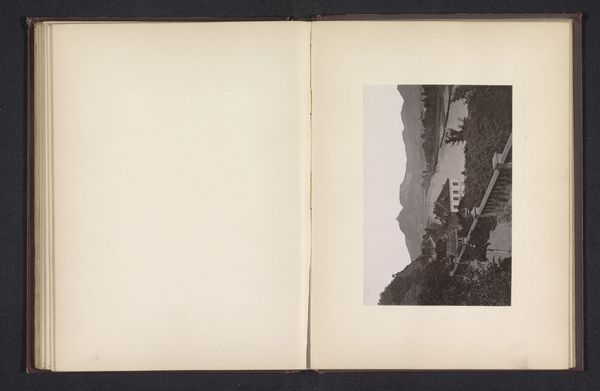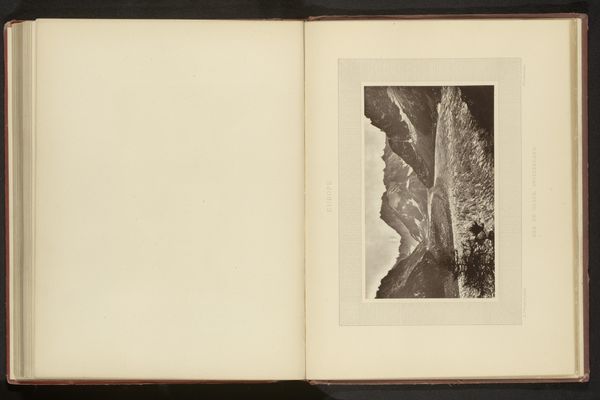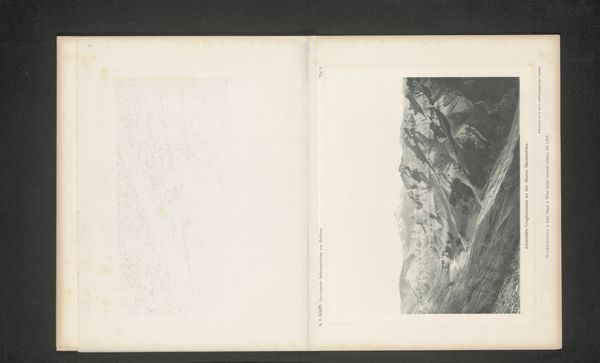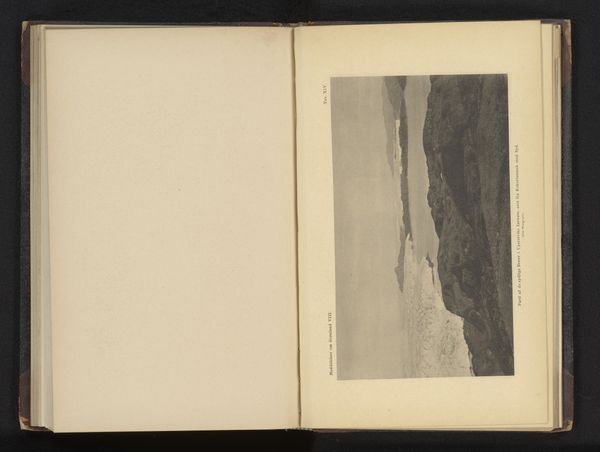
print, photography
# print
#
landscape
#
photography
#
mountain
Dimensions: height 110 mm, width 168 mm
Copyright: Rijks Museum: Open Domain
Curator: Here we have an image titled "Gezicht op Bellinzona," dating to before 1898. It's a landscape view presented as a black and white print, possibly derived from a photograph. Editor: Immediately I see the density of human creation against the formidable, unyielding form of the mountains. The town seems to huddle, a response to something bigger than itself. Curator: Bellinzona itself, with its three castles, has always been a point of connection and control, historically relevant. What symbols do you recognize in this contrast? Editor: Well, that is where my interests are piqued. How this image came to be distributed as a print—its materiality as an easily reproducible object, and that fact would have given it a different type of symbolic capital than, say, an oil painting of the same subject. Curator: I understand the allure of the print's democratizing effect. The means of photographic reproduction in the late 19th century changed landscape depiction but note the mountain imagery itself: mountains, across cultures, often represent steadfastness, spiritual seeking, and, naturally, challenge. To have the man-made literally clinging to their slopes…it speaks volumes. Editor: Yes, but it makes me think about labor: who printed this, distributed it? Was it a single artist crafting each impression, or an early form of mass production with teams of people working? It really would affect how we might view the social dynamics embedded in such a landscape, with those social issues further underlined by photographic materials of the 1890s. Curator: That kind of photographic document held a mirror to its time, showing realities, even when aesthetically framed. So perhaps the very act of capturing Bellinzona in this way solidifies its then contemporary identity. I feel that we can read it not only as an artwork but as a social record. Editor: It pushes us to consider, too, how images were consumed and valued differently when bound in books as prints versus, say, large individual photographic displays. What labor practices influenced its creation, and how did the social standing of this image’s materials mediate that emotional engagement you’re discussing. Curator: It truly complicates things. It underscores that the symbolic value of anything is deeply woven with the real-world materials. Editor: I completely agree and understanding those linkages are really the key.
Comments
No comments
Be the first to comment and join the conversation on the ultimate creative platform.

